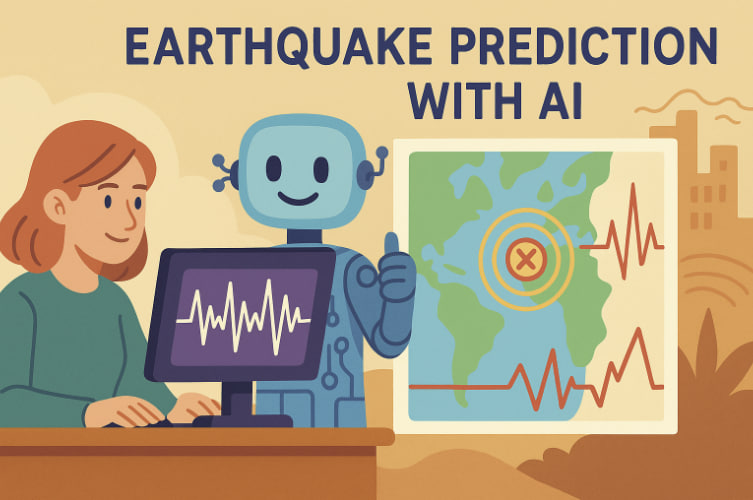Earthquakes are among the most devastating natural disasters — sudden, destructive, and often impossible to anticipate. For decades, scientists have tried to develop reliable early warning systems, but the complexity of seismic behavior has made accurate forecasting a major challenge. However, with the rise of Artificial Intelligence (AI), a new frontier in earthquake prediction is emerging.
Why Earthquakes Are So Hard to Predict
Earthquakes result from tectonic plate movement, where stress builds up and is suddenly released along faults. The exact timing, location, and magnitude of these events are influenced by numerous nonlinear and chaotic variables — making traditional prediction nearly impossible beyond seconds of advance notice.
While seismic monitoring networks can issue early warnings just before shaking reaches population centers, true forecasting — predicting days, weeks, or even months in advance — remains elusive.
How AI Is Changing the Game
Artificial Intelligence, especially machine learning (ML) and deep learning, can process vast datasets and detect subtle patterns that human analysts may miss. Here’s how AI is being used in seismic science:
- Seismic Signal Classification
AI models are trained to distinguish between different types of seismic waves, background noise, and potential precursors to earthquakes. This improves real-time monitoring accuracy. - Pattern Recognition in Historical Data
By analyzing decades of seismic records, AI can identify patterns that often precede larger quakes, such as microseismicity clusters, changes in wave velocity, or unusual underground shifts. - Predictive Modeling with Sensor Data
Modern seismic sensors generate massive datasets. AI can integrate data from ground deformation, gas emissions, magnetic fields, and even animal behavior to build risk maps and forecast probabilities. - Real-Time Earthquake Early Warning (EEW)
AI-powered EEW systems can detect initial quake signals and send alerts milliseconds faster than traditional methods — potentially saving lives in high-risk zones.
Notable AI-Based Earthquake Projects
- Japan’s AI Seismic Forecasting: Japan, one of the most earthquake-prone countries, is integrating deep learning into its nationwide early warning systems.
- Stanford & Google DeepMind Collaborations: Research teams are using deep neural networks to analyze waveforms and detect patterns that indicate foreshocks or stress buildups.
- China’s AI-Based Monitoring: China has implemented a city-wide system in Chengdu that uses AI to issue warnings seconds before shaking — giving residents time to take cover.
Limitations and Challenges
Despite its promise, AI has important limitations in earthquake forecasting:
- Data Quality: Seismic data is often noisy and incomplete, especially in remote areas.
- Rare Events: Large earthquakes are infrequent, giving AI models relatively few examples to learn from.
- Interpretability: Deep learning models are often “black boxes,” making it difficult to understand how they reach predictions.
- False Positives: Overly sensitive AI may cause unnecessary panic if predictions are inaccurate.
Future Outlook
The goal is not necessarily to predict the exact time and location of the next earthquake, but to improve risk assessment, preparedness, and early warning capabilities. As AI models evolve and sensor networks grow more sophisticated, hybrid approaches combining physics-based models with data-driven AI insights may dramatically enhance our ability to understand seismic behavior.
Conclusion
While perfect prediction remains out of reach, AI is transforming how we monitor and interpret seismic activity. With enough data, smart algorithms, and global collaboration, artificial intelligence may become one of our most powerful tools in reducing the human cost of earthquakes.
Glossary
- Seismic Waves – Energy waves generated by earthquakes that travel through the Earth.
- Machine Learning (ML) – A branch of AI where systems learn from data without being explicitly programmed.
- Deep Learning – A type of machine learning using neural networks with many layers, effective in pattern recognition.
- Early Warning System (EEW) – A network that detects an earthquake in progress and sends alerts before shaking arrives.
- Tectonic Plates – Massive pieces of Earth’s crust that move and interact, often causing earthquakes.


